Professor Wouter Montfooij’s class visited the path of totality to see the total solar eclipse
Led by Wouter Montfrooij, nine students traveled to Jackson, Mo. to see the solar eclipse in its path of totality on April 8, 2024 after spending a semester studying the history and science behind it. After their long drive, the group settled around the University of Missouri Extension Center of Cape Girardeau County.
 Senior Jayna Wallinger uses NASA’s 3-Hole Punch Pin Projector to track the eclipse’s progress on April 8, 2024 at University of Missouri Extension Center of Cape Girardeau County in Jackson, Mo. The card allowed the holder to watch as the sun’s shadow was interrupted by the moon.
Senior Jayna Wallinger uses NASA’s 3-Hole Punch Pin Projector to track the eclipse’s progress on April 8, 2024 at University of Missouri Extension Center of Cape Girardeau County in Jackson, Mo. The card allowed the holder to watch as the sun’s shadow was interrupted by the moon.
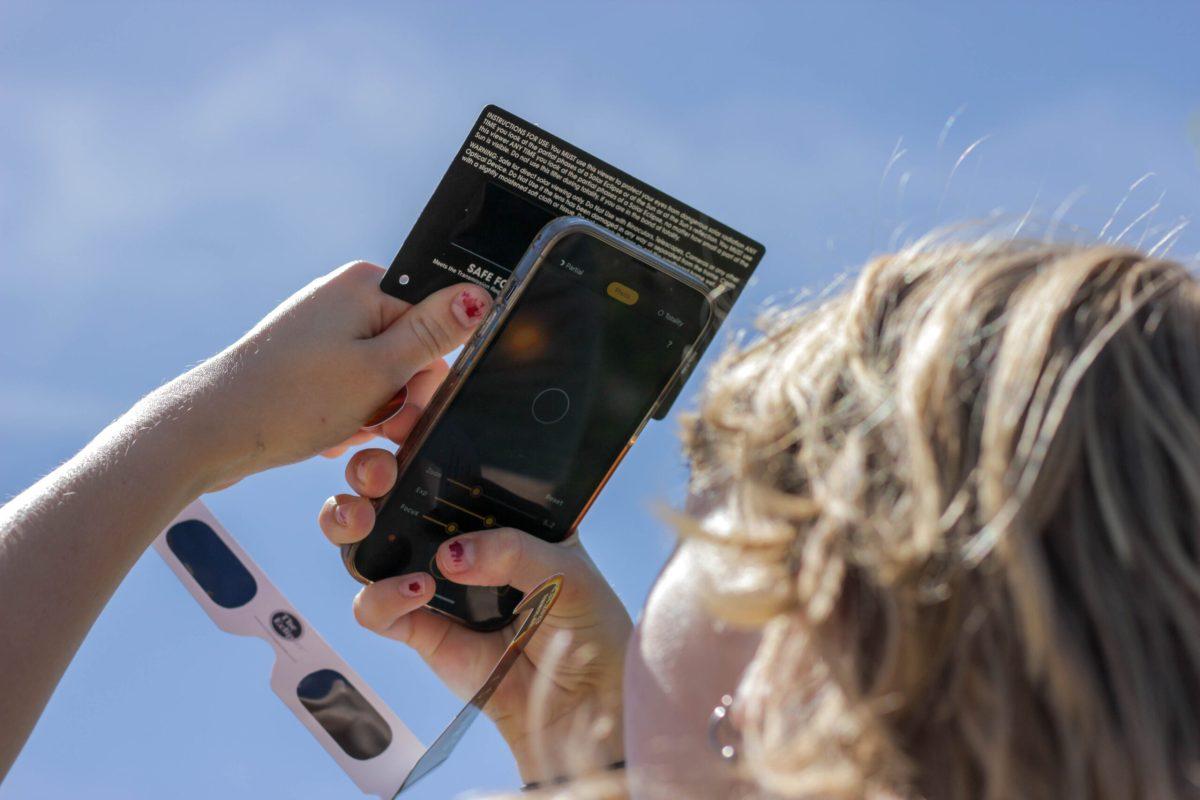 Sophomore Sophia Knehans captures a picture of the eclipse through a protective lens. Students were given filters that they could hold over their cameras to capture the eclipse’s progress without risk of hurting their lenses.
Sophomore Sophia Knehans captures a picture of the eclipse through a protective lens. Students were given filters that they could hold over their cameras to capture the eclipse’s progress without risk of hurting their lenses.
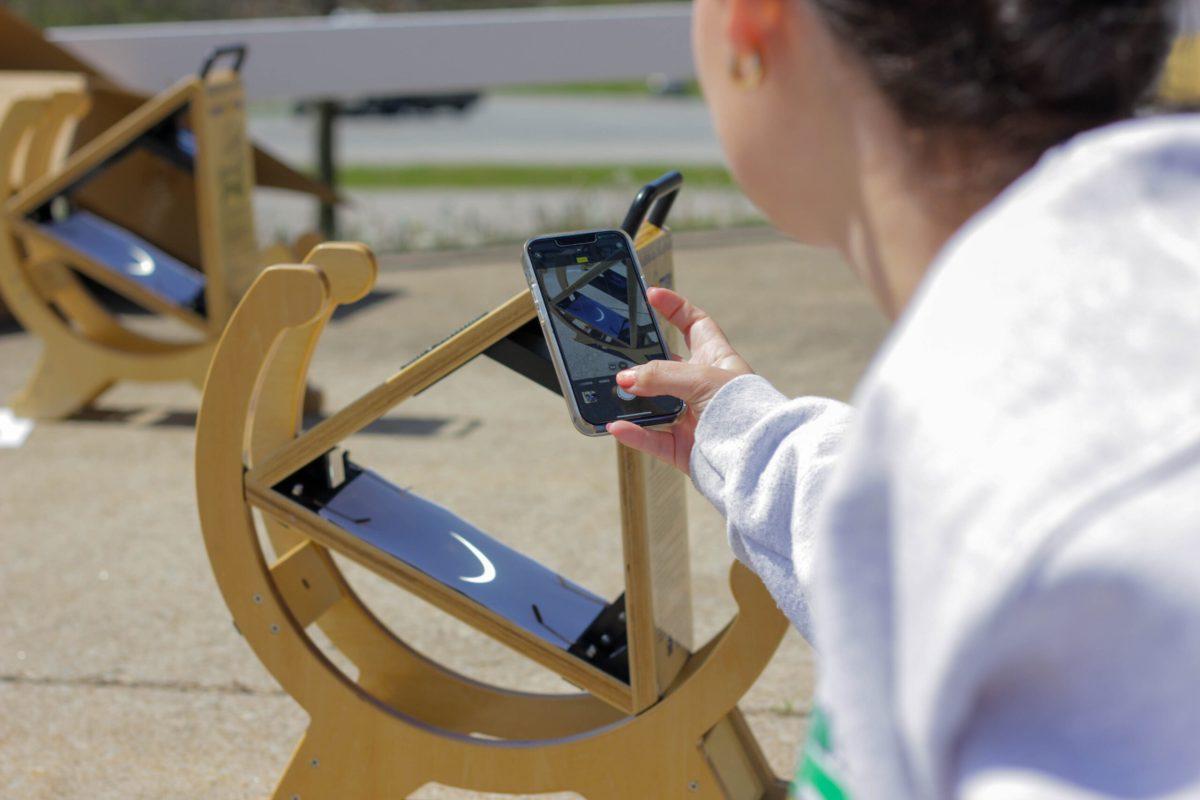 A Sunspotter Solar Telescope sits on the ground outside the MU Extension Center. “[It’s not] a detailed image. It’s just kind of showing you temperature-wise what’s on the sun,” junior Janeya Monroe said. “It’s using various mirrors and a little window piece to basically reflect through the sun, through the little glass pane, onto the mirrors and then just put it on the paper.”
A Sunspotter Solar Telescope sits on the ground outside the MU Extension Center. “[It’s not] a detailed image. It’s just kind of showing you temperature-wise what’s on the sun,” junior Janeya Monroe said. “It’s using various mirrors and a little window piece to basically reflect through the sun, through the little glass pane, onto the mirrors and then just put it on the paper.”
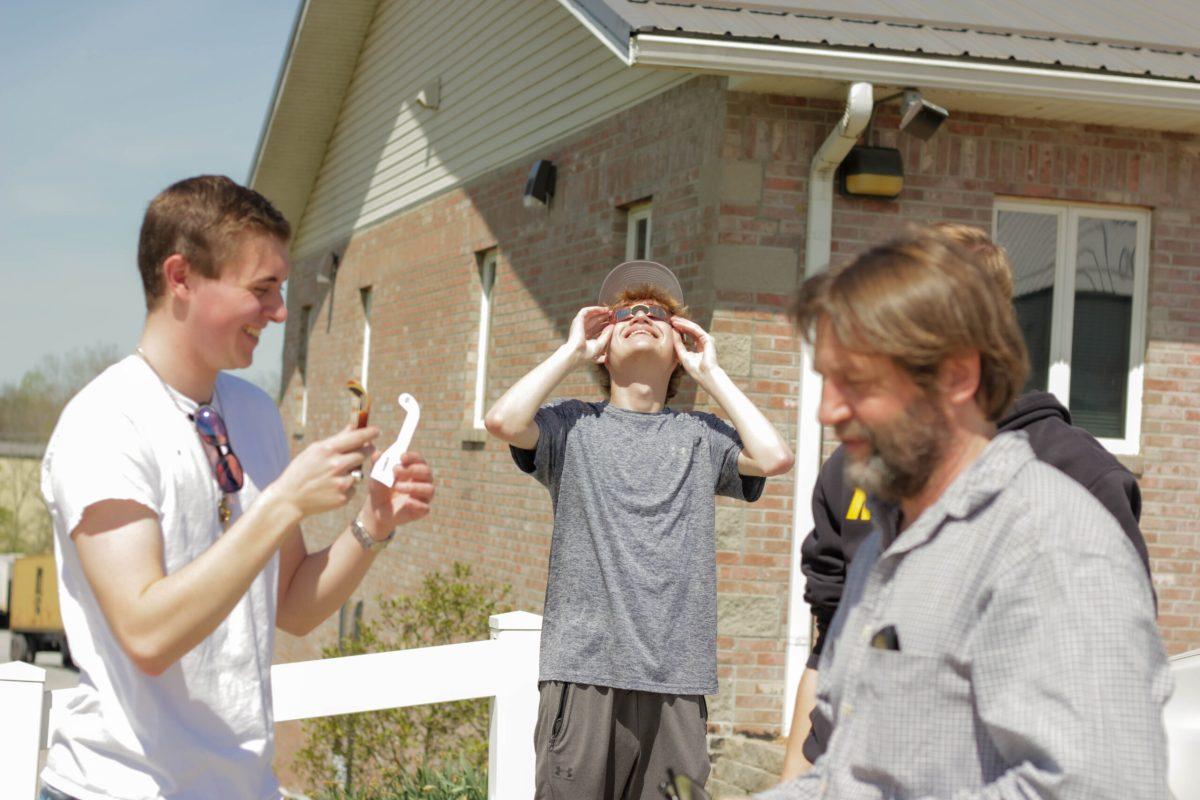 As the eclipse starts, students watch with protective eyewear. Freshman Elijah Rowland was happy to test out the glasses. “I saw the eclipse in 2017, but this time I really got to appreciate its amazingness and see how rare and spectacular it is,” Rowland said.
As the eclipse starts, students watch with protective eyewear. Freshman Elijah Rowland was happy to test out the glasses. “I saw the eclipse in 2017, but this time I really got to appreciate its amazingness and see how rare and spectacular it is,” Rowland said.
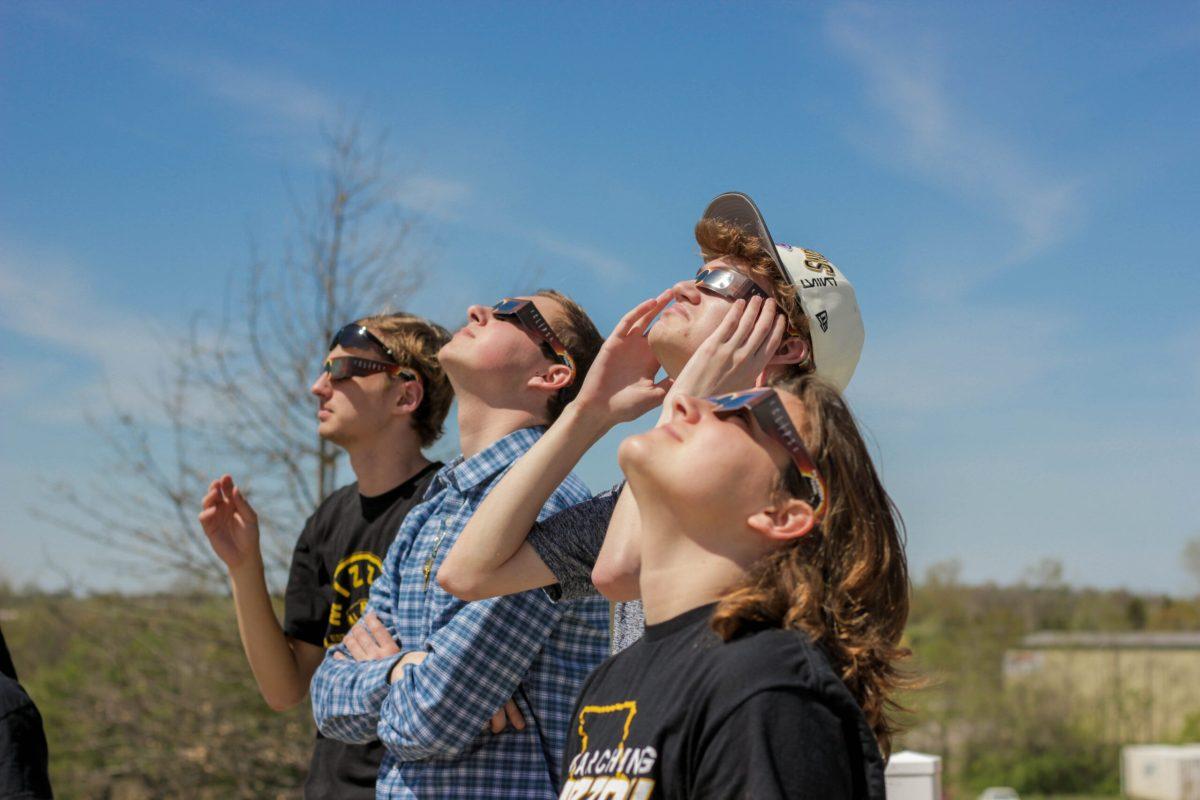 Rowland’s (second from right) classmates join him in watching the eclipse. For senior Alex Taylor (second from left), the eclipse was an especially unique experience. Alex is colorblind, but during the eclipse he was able to see different colors separated instead of blended together like he usually does. “The greens and the browns really separated for me which was really awesome,” Taylor said.
Rowland’s (second from right) classmates join him in watching the eclipse. For senior Alex Taylor (second from left), the eclipse was an especially unique experience. Alex is colorblind, but during the eclipse he was able to see different colors separated instead of blended together like he usually does. “The greens and the browns really separated for me which was really awesome,” Taylor said.
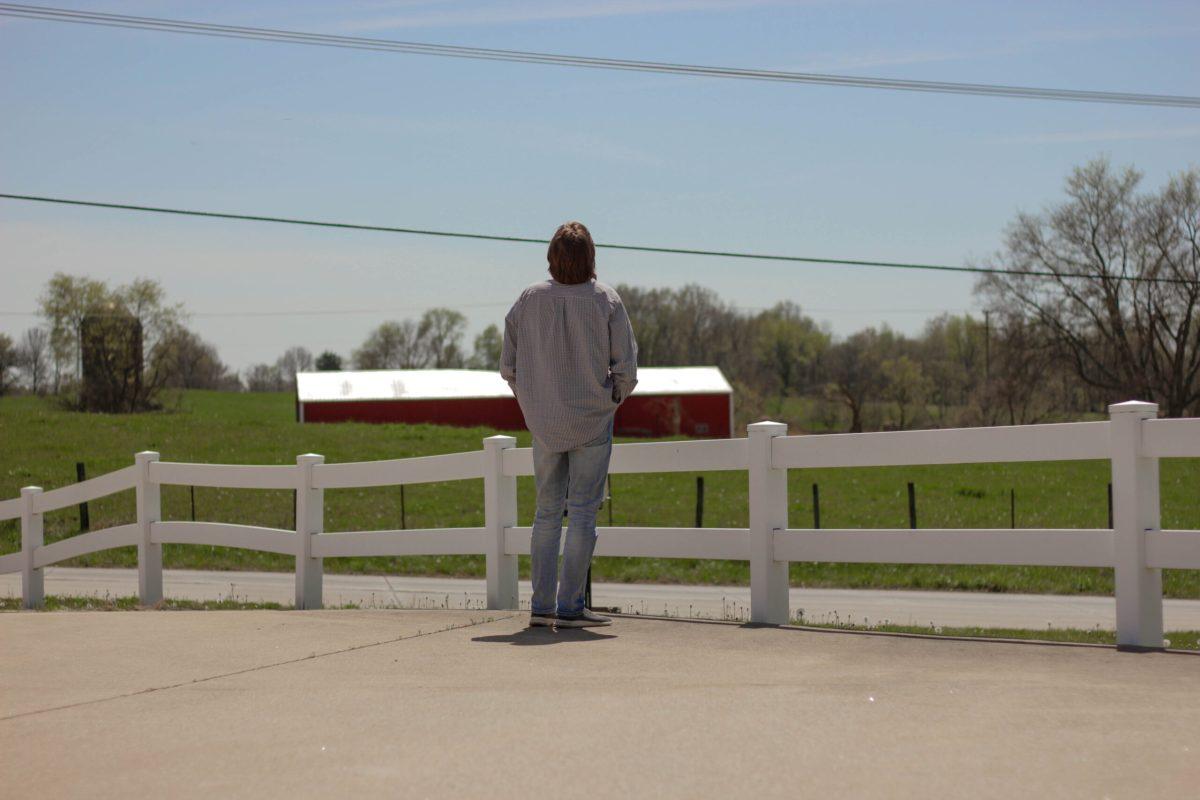 Professor Wouter Montfrooij watches the sky as the eclipse gets closer to totality. Montfrooij explained how the occurrence of the eclipse and the locations of the other planets in regards to the eclipse are rare. “If we’re really lucky, we can see Mercury just to the upper left of the sun,” Montfrooij said. “So we will be able to see all five classical planets that were known in ancient times as well as the sun and the moon.”
Professor Wouter Montfrooij watches the sky as the eclipse gets closer to totality. Montfrooij explained how the occurrence of the eclipse and the locations of the other planets in regards to the eclipse are rare. “If we’re really lucky, we can see Mercury just to the upper left of the sun,” Montfrooij said. “So we will be able to see all five classical planets that were known in ancient times as well as the sun and the moon.”
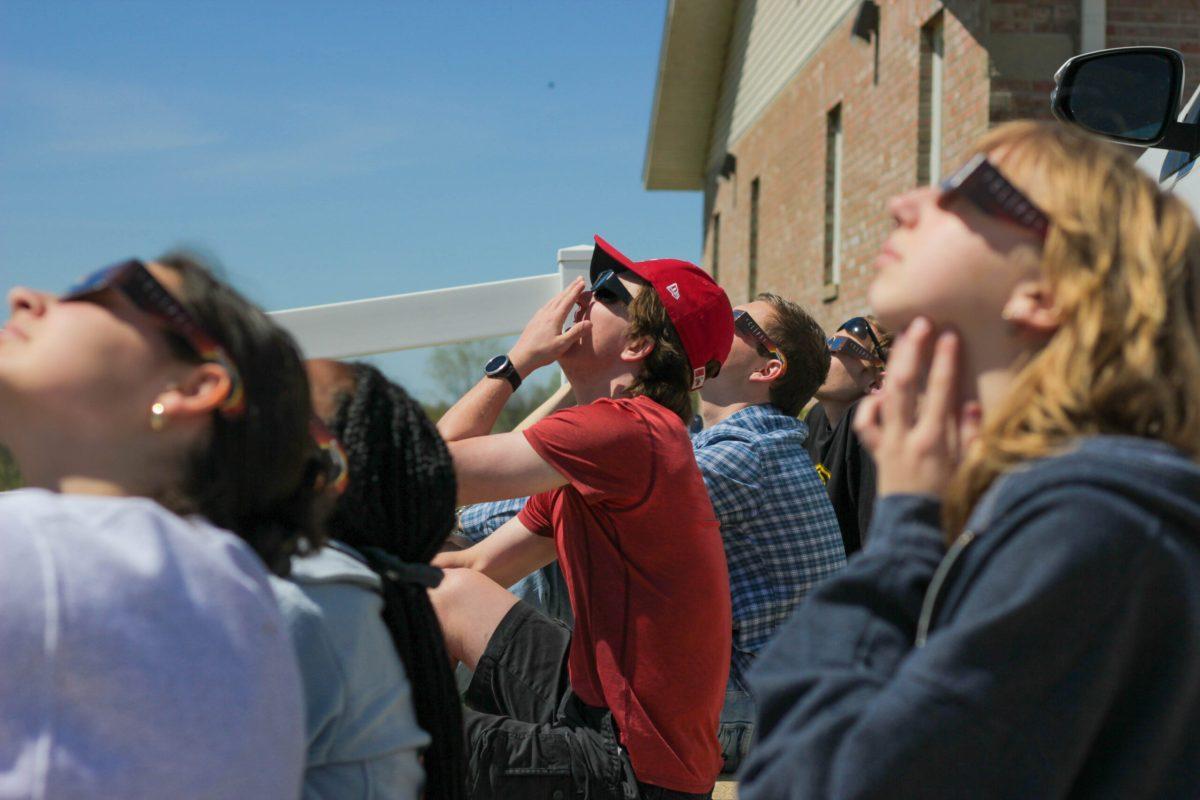 As the sky begins to darken, freshman Nicholas Ellinger sits to watch the moon take over the sun. “It felt utterly surreal just watching it,” Ellinger said. “No photos could do it justice, especially with the Corona around the sun.”
As the sky begins to darken, freshman Nicholas Ellinger sits to watch the moon take over the sun. “It felt utterly surreal just watching it,” Ellinger said. “No photos could do it justice, especially with the Corona around the sun.”
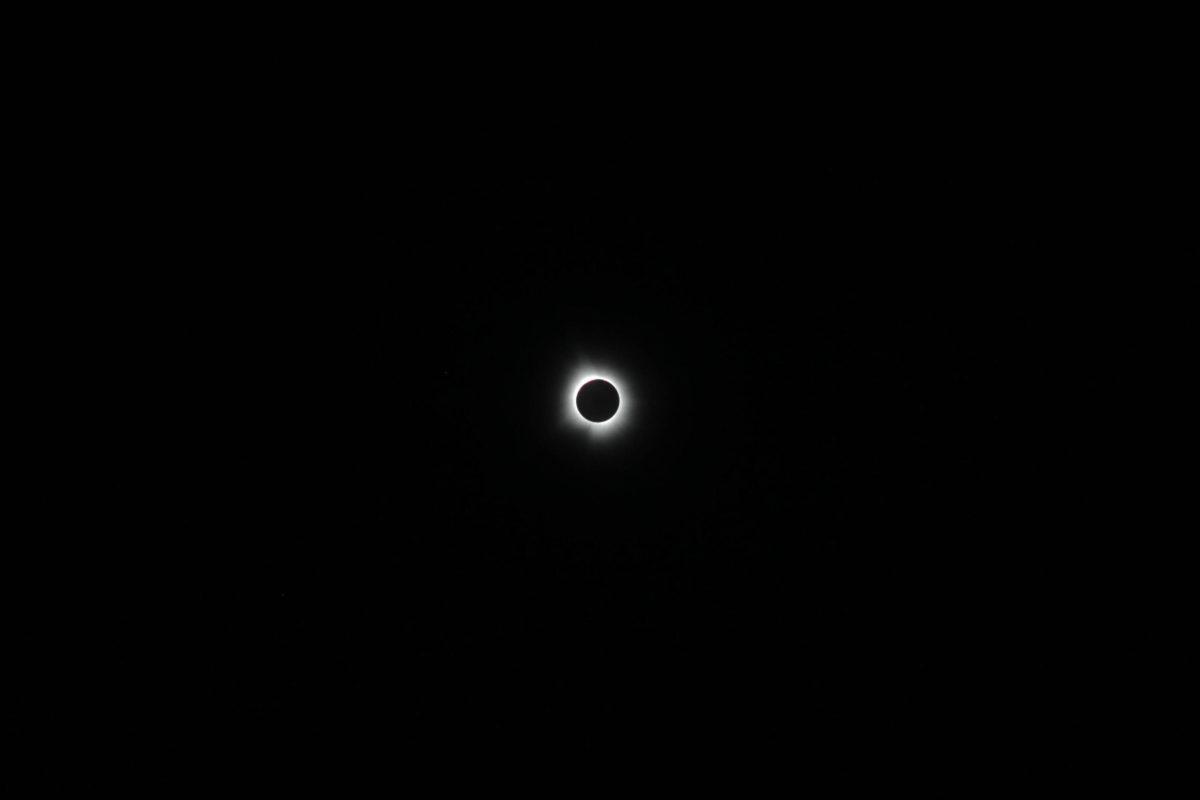 The moon fully covers the sun for the total eclipse in Jackson, Missouri. The totality lasted approximately 4 minutes. The length of the eclipse varied in other places due to the moon’s distance from the Earth and the Earth’s distance from the sun.
The moon fully covers the sun for the total eclipse in Jackson, Missouri. The totality lasted approximately 4 minutes. The length of the eclipse varied in other places due to the moon’s distance from the Earth and the Earth’s distance from the sun.